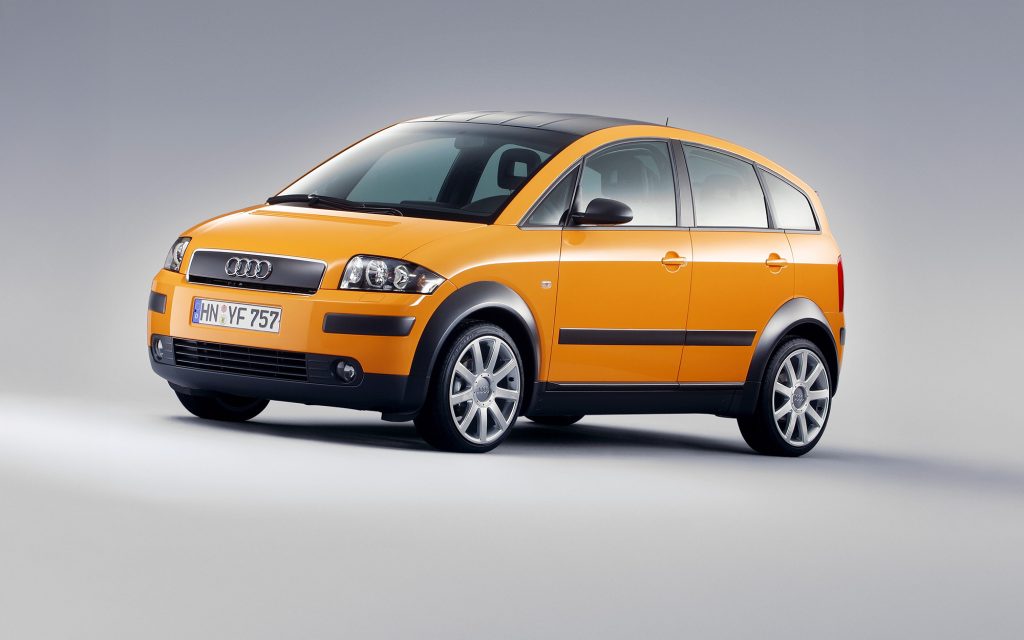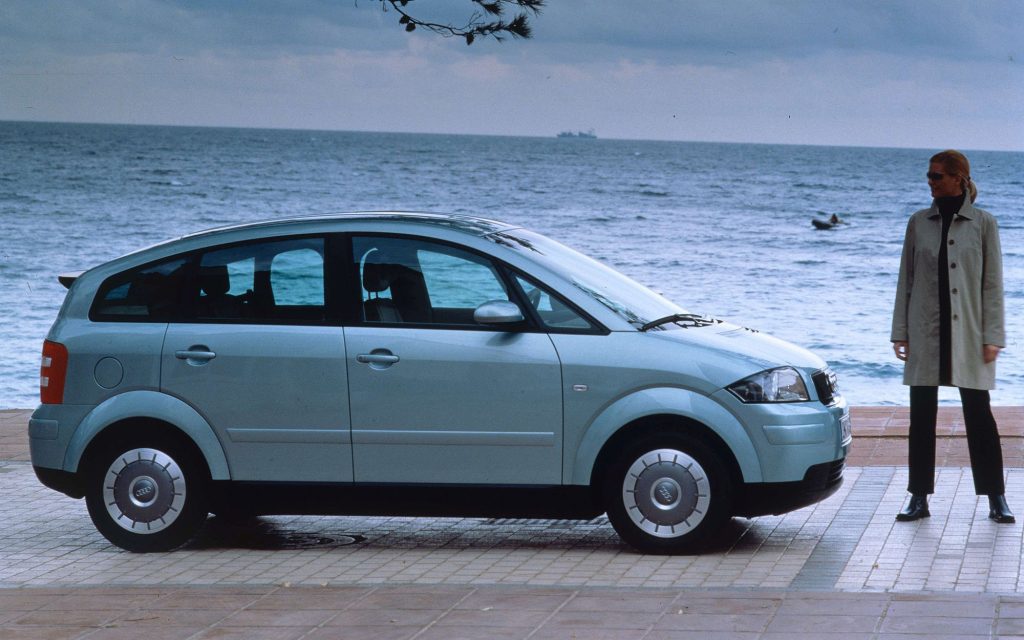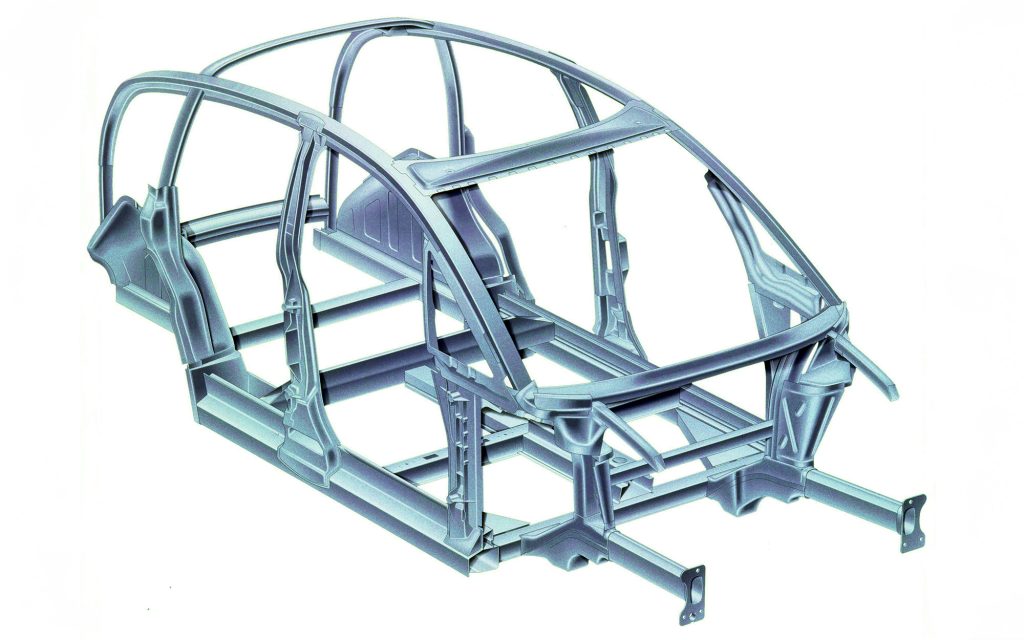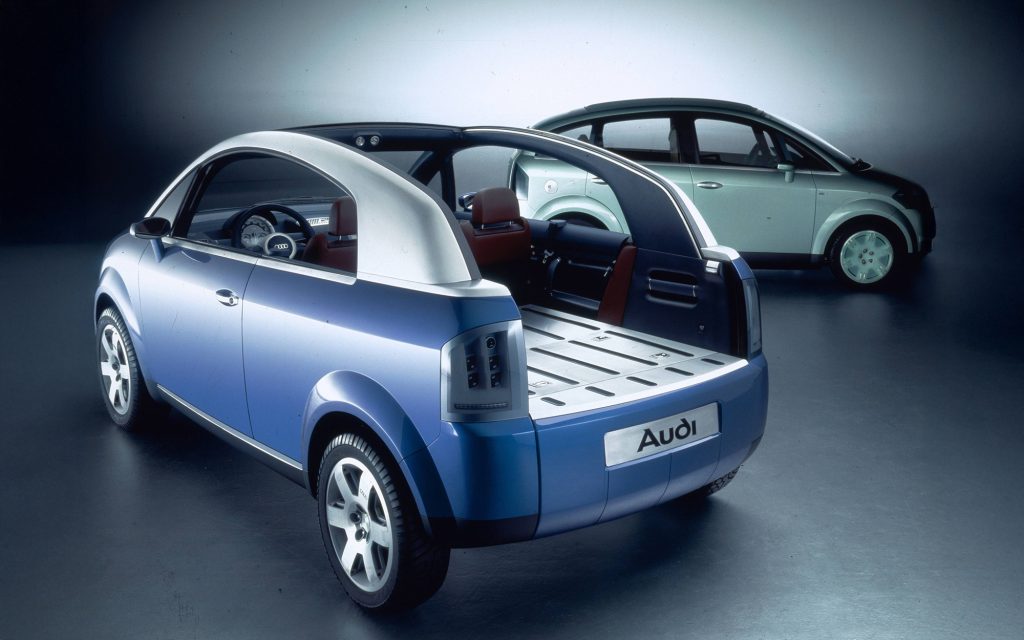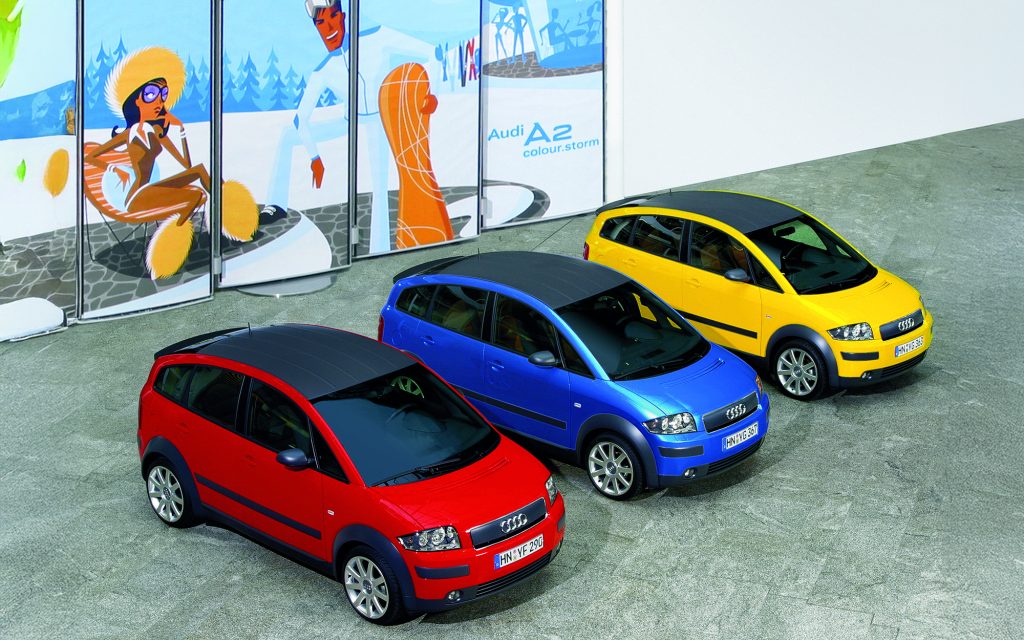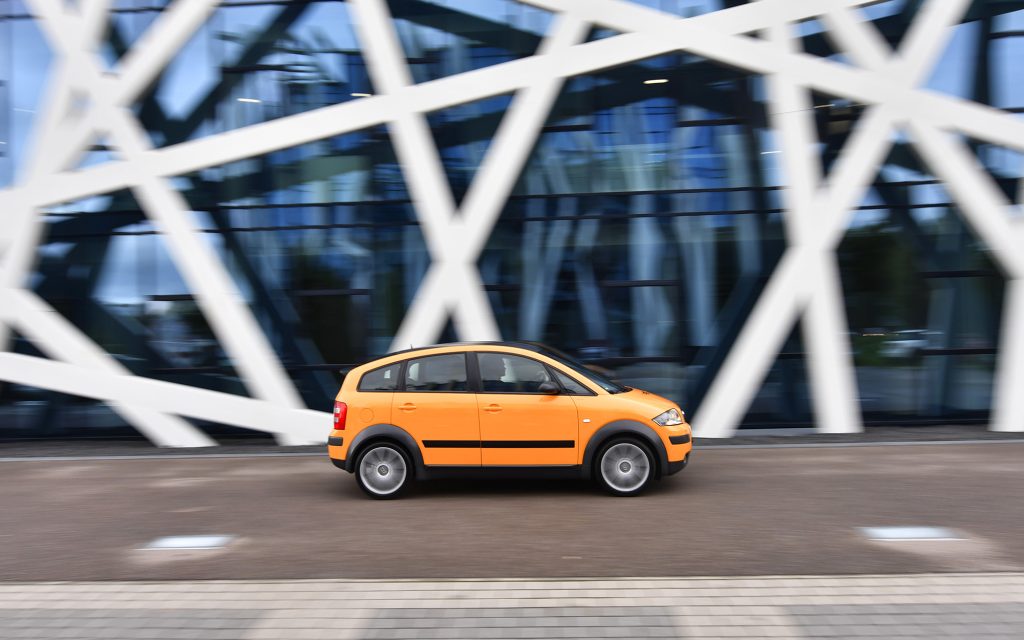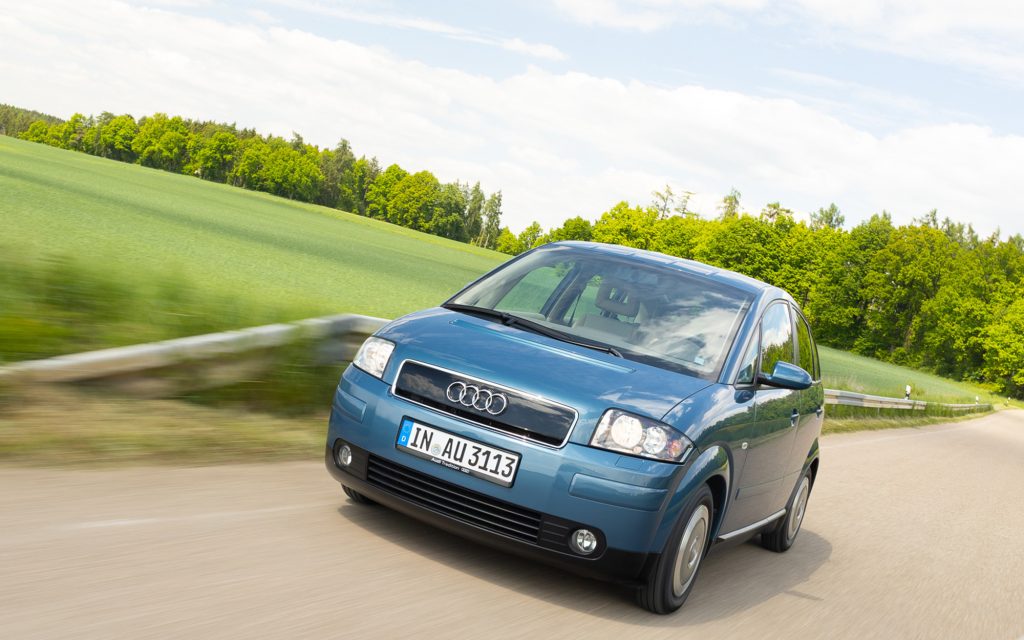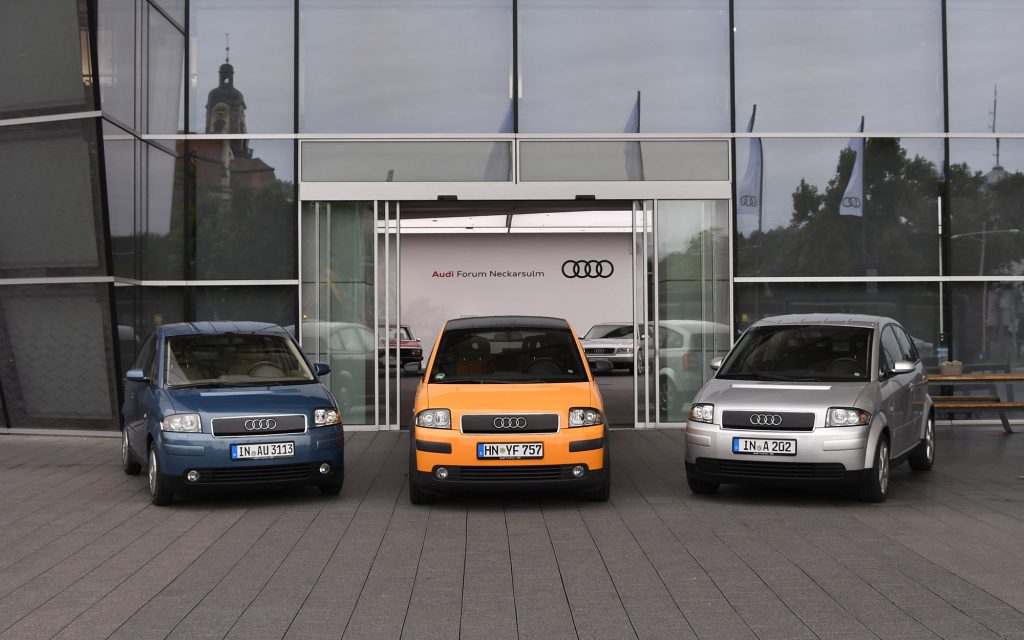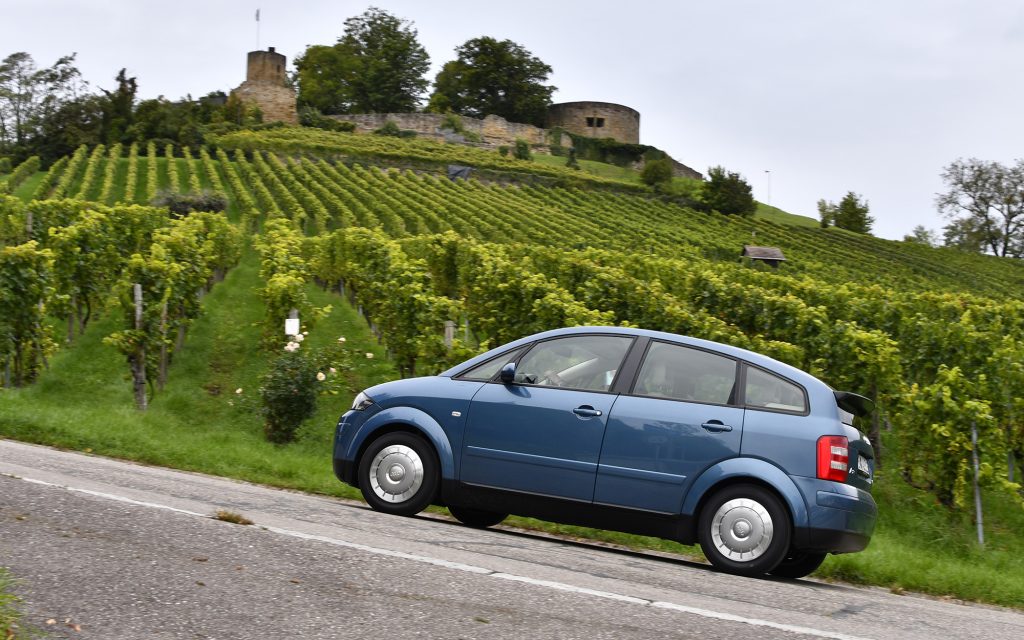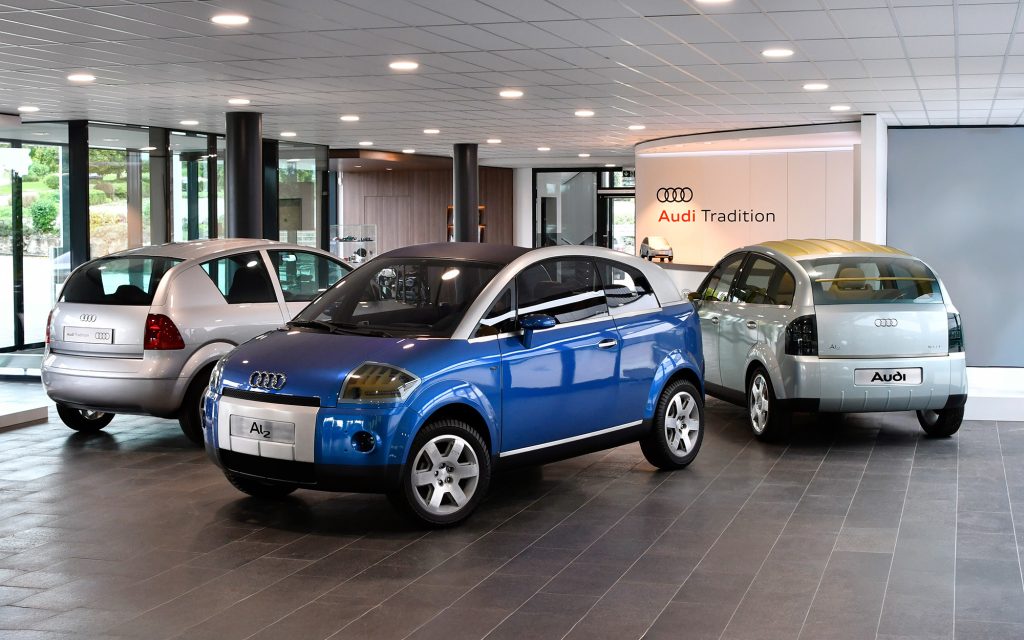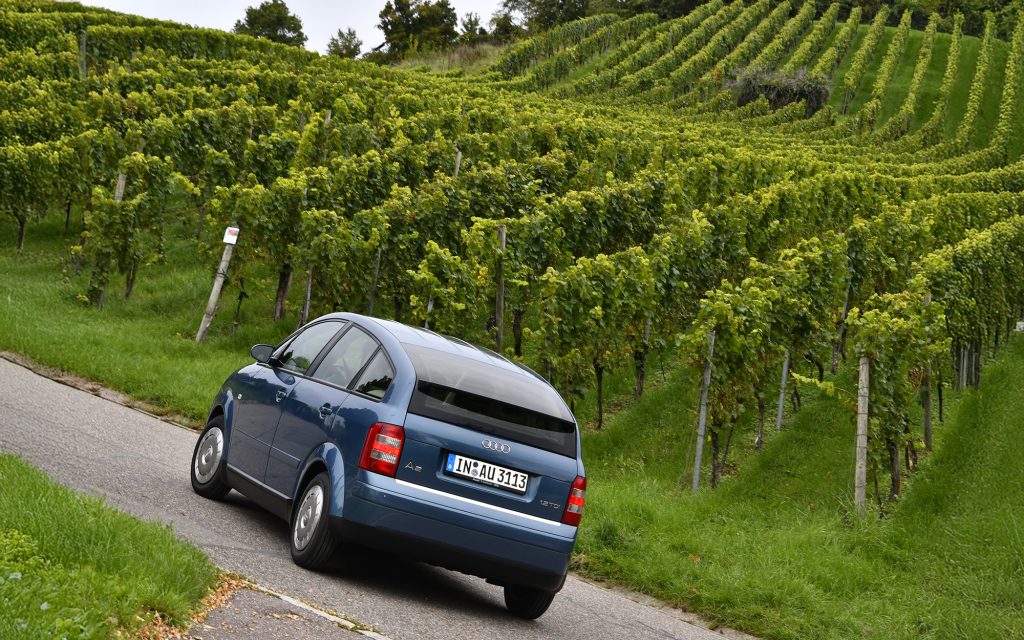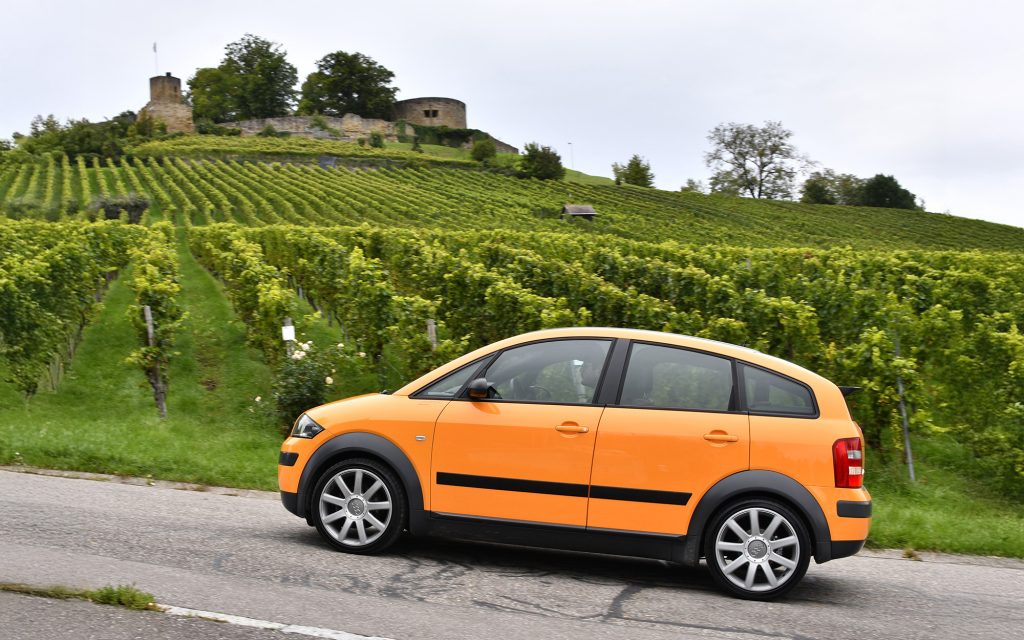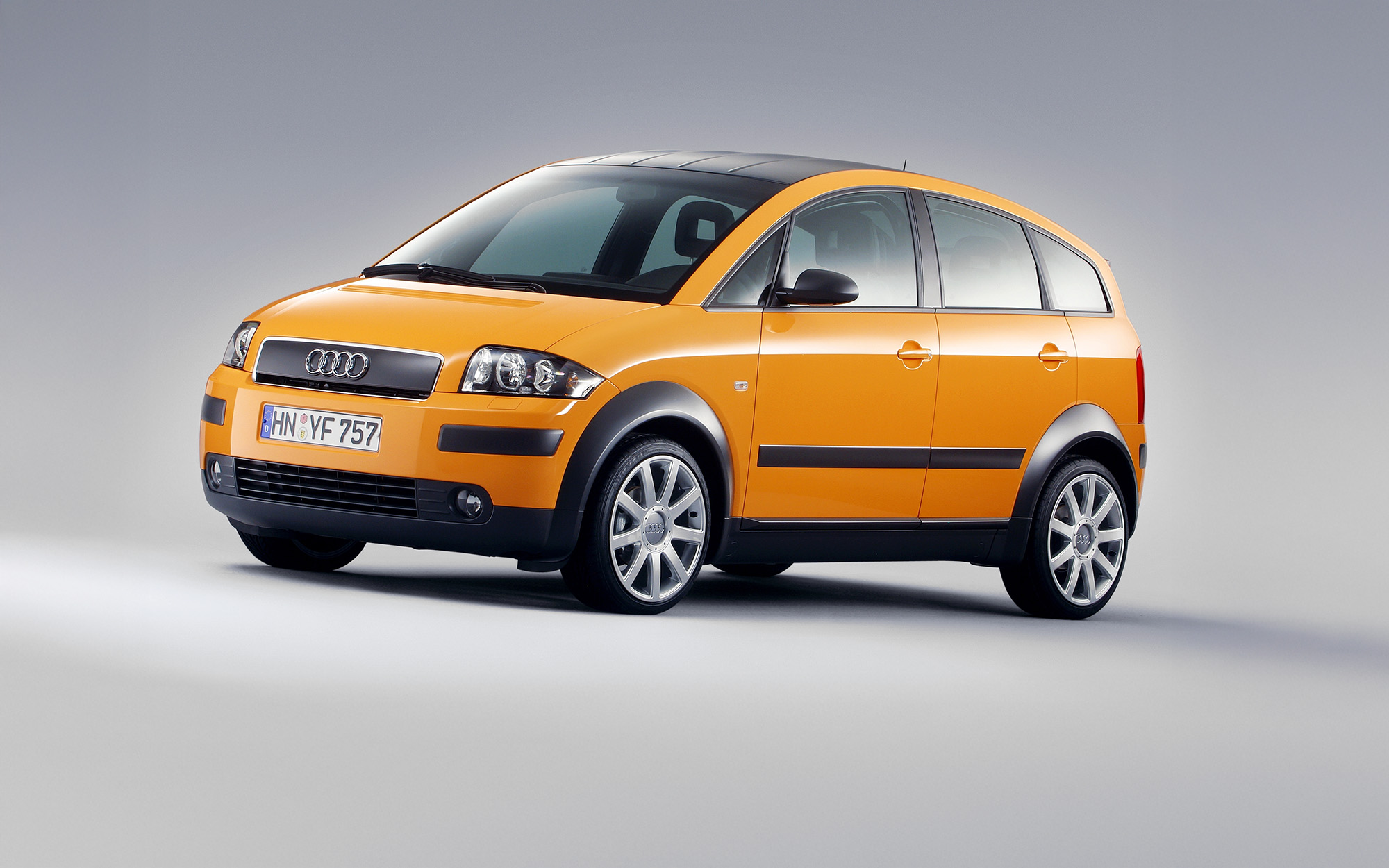When Audi launched the A2 in 1999, it wasn’t just another compact hatchback. It was a statement piece: a lightweight, aerodynamic, aluminum-bodied machine that brought premium engineering into the entry-level segment. The A2 polarized buyers at launch, but today it stands tall as one of Audi’s most innovative milestones — and a modern classic beloved by enthusiasts.
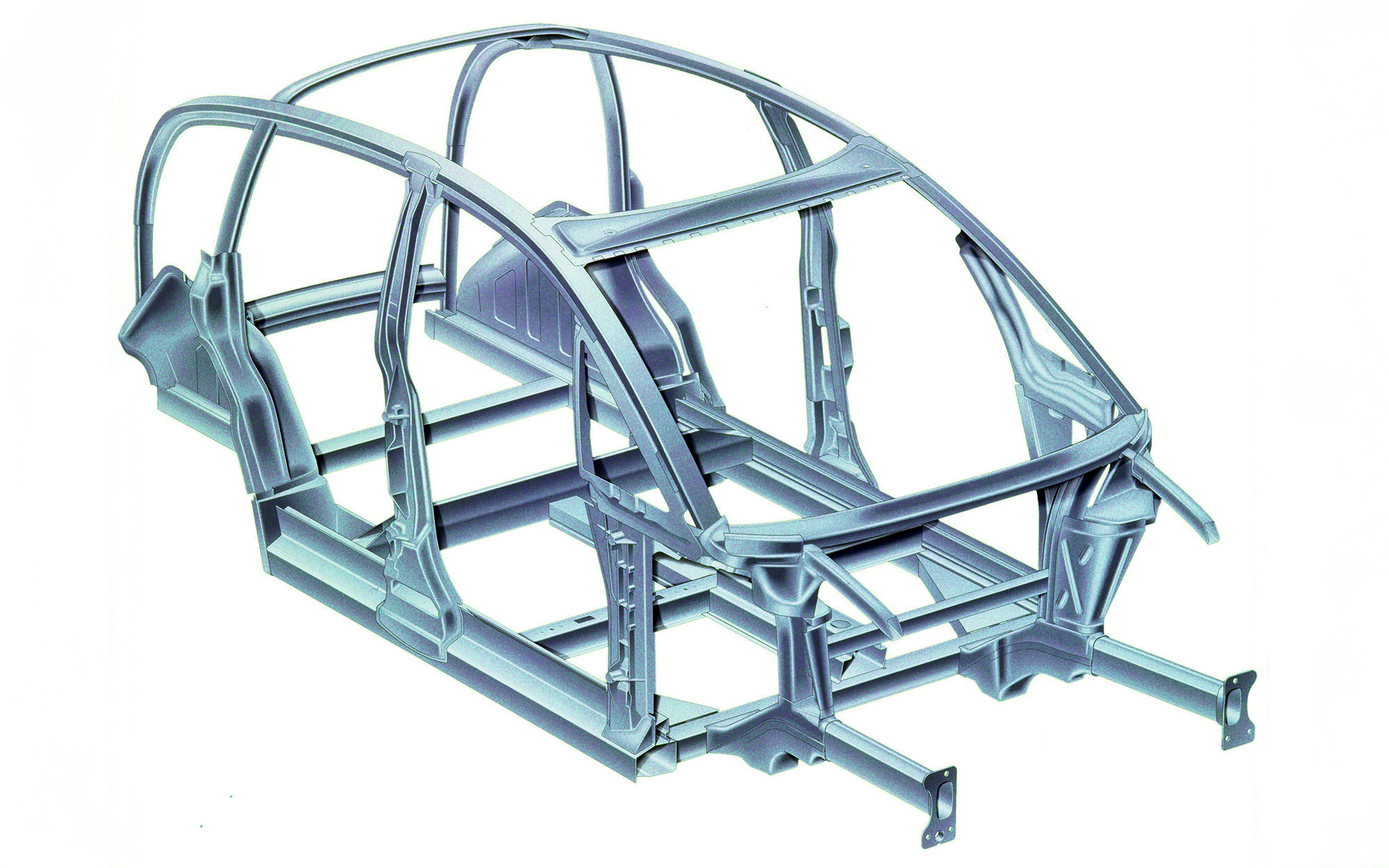
AN ALUMINUM SPACE
The Audi A2’s secret weapon was its aluminum Audi Space Frame (ASF). Borrowed in concept from the A8 but executed in a more cost-efficient way, the ASF made the A2 the first compact car in recent automotive history with a body made entirely of aluminum. The result: a body shell weighing just 153 kilograms — only 60 percent of a comparable steel structure. Measuring 3.83 meters long, 1.67 meters wide, and 1.55 meters tall, the A2 offered impressive interior space despite its compact footprint.
Production was set up in Neckarsulm, with brand-new facilities inaugurated on November 15, 1999. On the same day, Audi revealed the A2 1.2 TDI — the world’s first four-door “three-liter car,” capable of consuming less than three liters of fuel per 100 km.
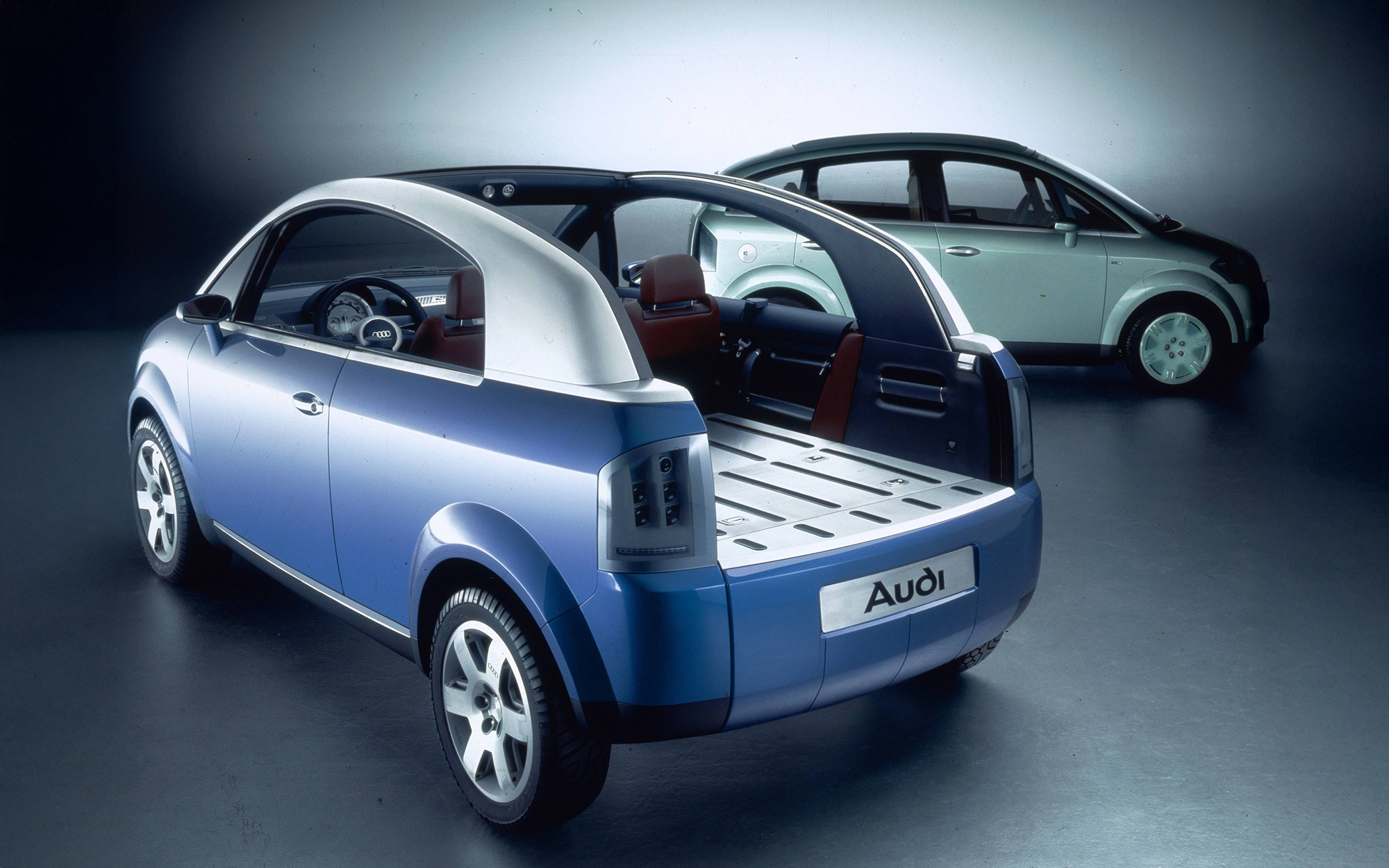
FROM RINGO TO AL2
Audi’s lightweight experiment began in the early 1990s, when Volkswagen Group set the goal of a three-liter car. Ingolstadt’s designers worked closely with the Neckarsulm aluminum center, producing a 1995 concept codenamed “Ringo.” The car’s interior was overseen by Stefan Sielaff, while exterior design was led by Luc Donckerwolke, working with Gerhard Pfefferle. The two-door study was already close to the A2’s final form.
Two further prototypes followed: “Light Green,” a concept shown at Frankfurt’s 1997 IAA, and “Light Blue,” a three-door study with retractable sunroof and versatile cargo design unveiled at the Tokyo Motor Show. Reactions were mixed, but as Al2 project manager Harald Wester later admitted: “Yes – it was clear to all of us from the beginning! The car had to be optimally streamlined. We practically slept in the wind tunnel to achieve optimal aerodynamics.”
The Board approved production in late 1997, and by September 1999 the production A2 took its bow at the IAA.
POWERTRAINS & EFFICIENCY
Over its lifetime, the A2 offered five engines: two gasoline and three diesels. The base 1.4-liter four-cylinder gasoline delivered 75 PS through a five-speed manual, consuming 5.9 liters/100 km. At launch in June 2000, buyers could also opt for a 1.4-liter TDI with 75 PS.
The highlight, though, was the A2 1.2 TDI. Introduced in late 1999 and sold from March 2001, this engineering showcase produced 61 PS and consumed just 2.99 liters/100 km. With an all-aluminum three-cylinder diesel, a five-speed automated manual, lightweight forged wheels, optimized seating, closed-off cooling intakes, underbody paneling, and narrow low-drag tires, the A2 1.2 TDI weighed only 855 kg and achieved a drag coefficient of just 0.25.
In 2002, Audi expanded the range with a 1.6 FSI delivering 110 PS and over 200 km/h top speed.
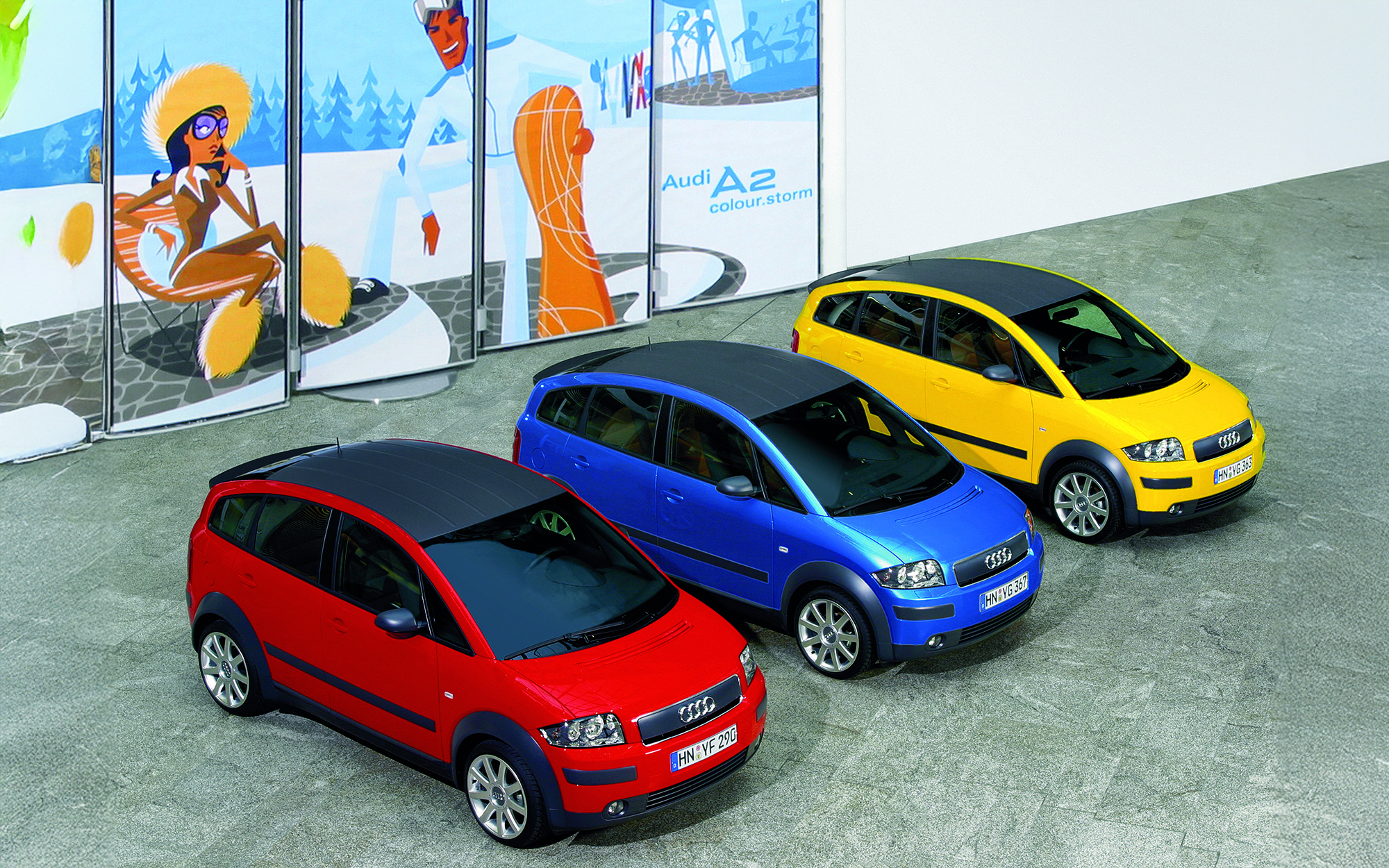
RAINING COLOR
March 2003 saw the introduction of the A2 “colour.storm” edition. Offered in bold hues like Imola Yellow, Misano Red pearl effect, Sprint Blue pearl effect, and Papaya Orange, these cars added contrasting matte-black roof and trim panels along with color-coordinated interiors. Available with four of the five engine options (all but the 1.2 TDI), colour.storm models gave the efficient A2 a dose of flair.
PRODUCTION NUMBERS
Despite its technical brilliance, sales lagged expectations. By the time production ended in July 2005, Audi had built 176,377 units in total:
- A2 1.2 TDI (61 PS, 2000–2005): 6,555 units
- A2 1.4 (75 PS, 2000–2005): 81,649 units
- A2 1.4 TDI (75 PS, 2000–2005): 69,676 units
- A2 1.4 TDI (90 PS, 2001–2005): 7,416 units
- A2 1.6 FSI (110 PS, 2002–2005): 11,081 units
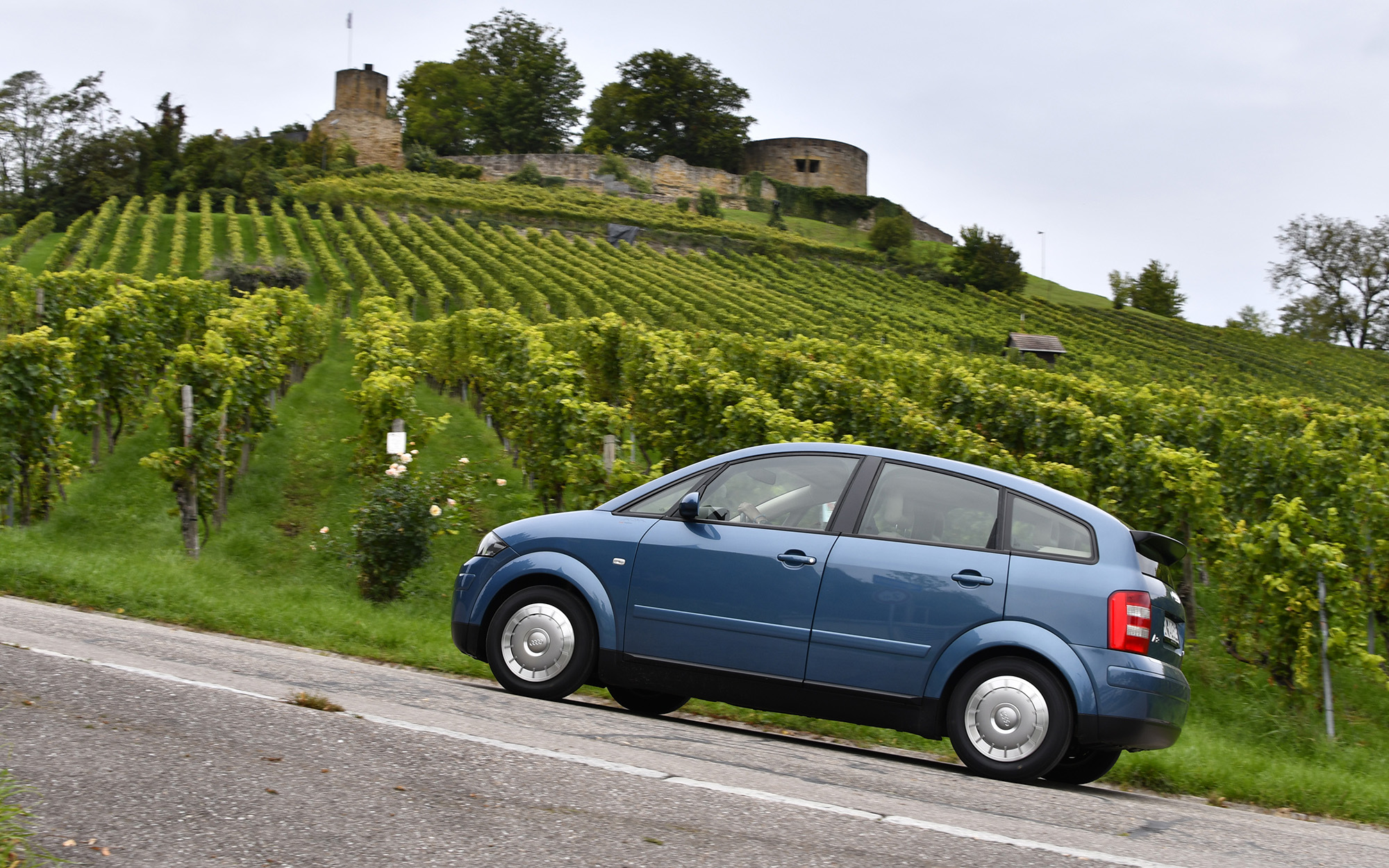
A CULT FOLLOWING
Though Audi ended production after just five years, the A2 has since earned cult status. Its combination of advanced engineering, aluminum craftsmanship, and everyday usability made it unique in the premium compact segment. Today, it continues to attract a loyal fan base — both as a daily driver and as a collectible modern classic with stable values.
REQUIRED READING
Enthusiasts wanting to dive deeper can turn to Audi A2 – Meilenstein und Kultobjekt by Dirk-Michael Conradt (Audi Tradition Edition, Delius Klasing Verlag, ISBN 978-3-667-11398-6). Available in German for €39.90 at the Audi Tradition Shop in Neckarsulm, the Audi museum mobile in Ingolstadt, bookstores, and online including Amazon, it offers a detailed history of the car that dared to be different.
PHOTO GALLERY
